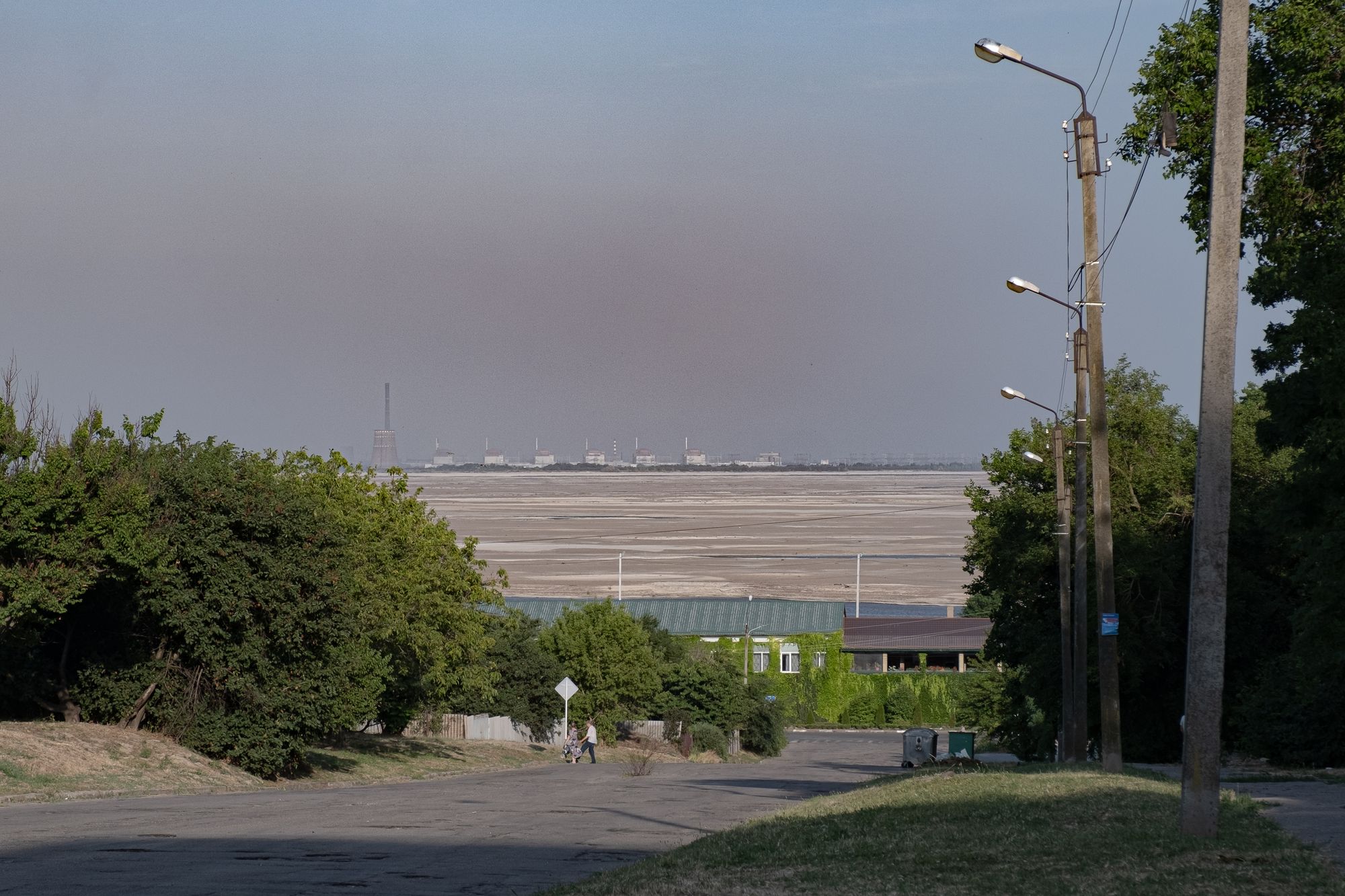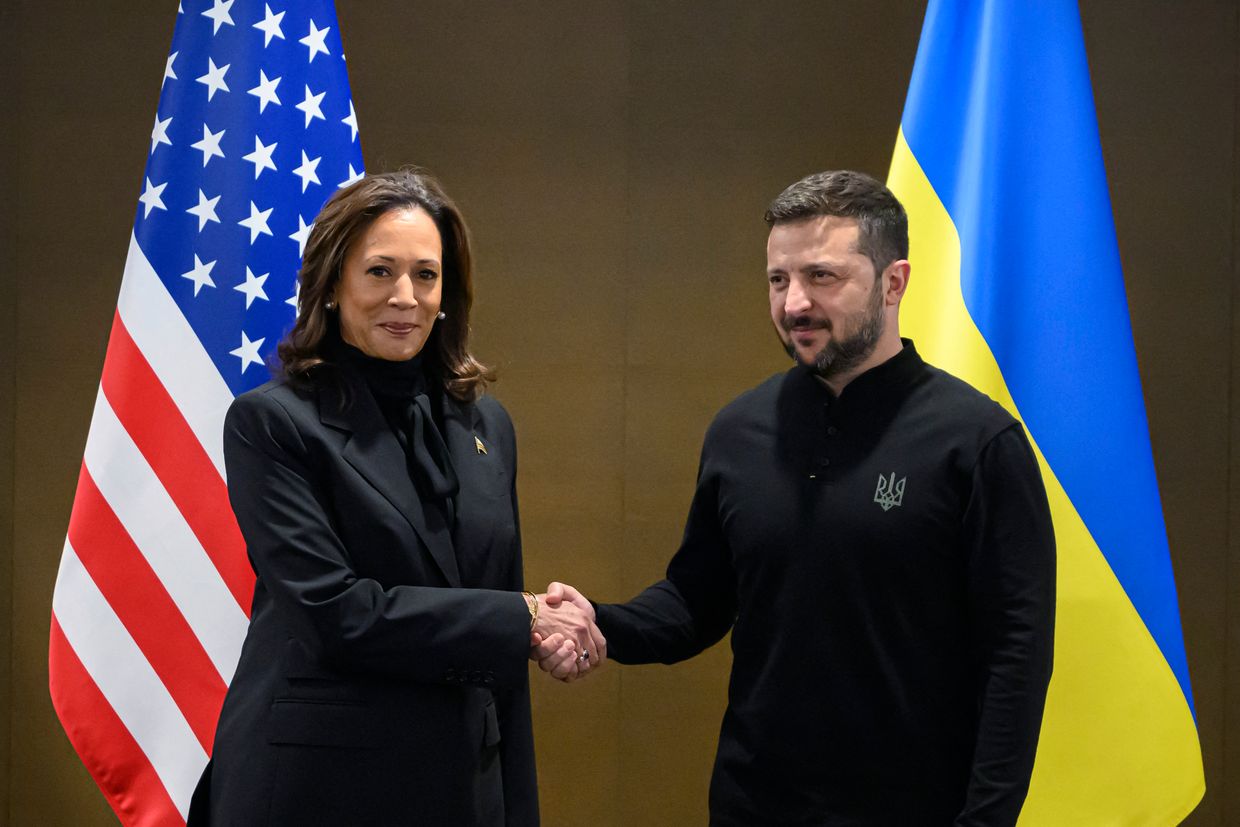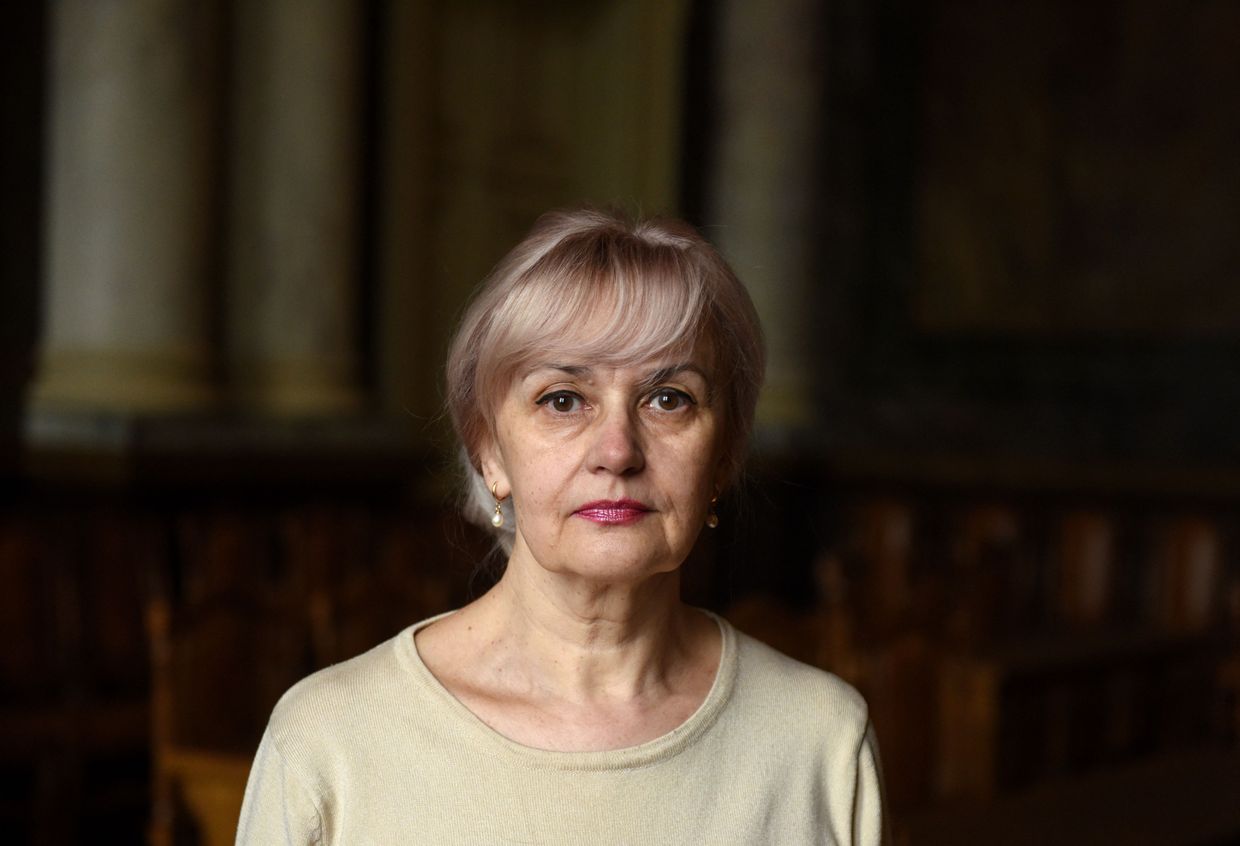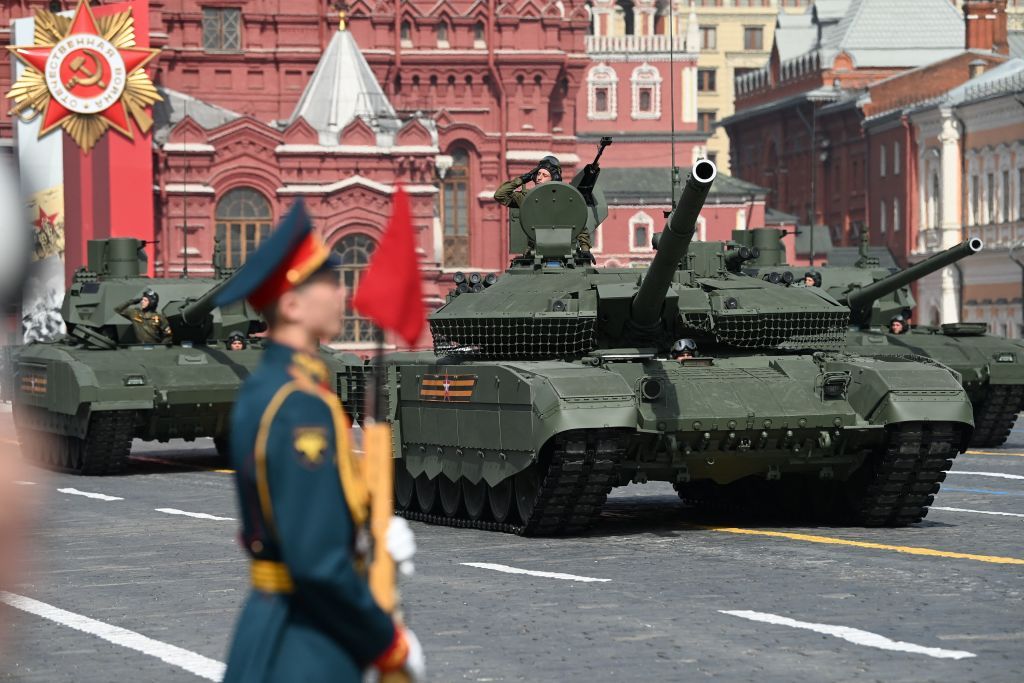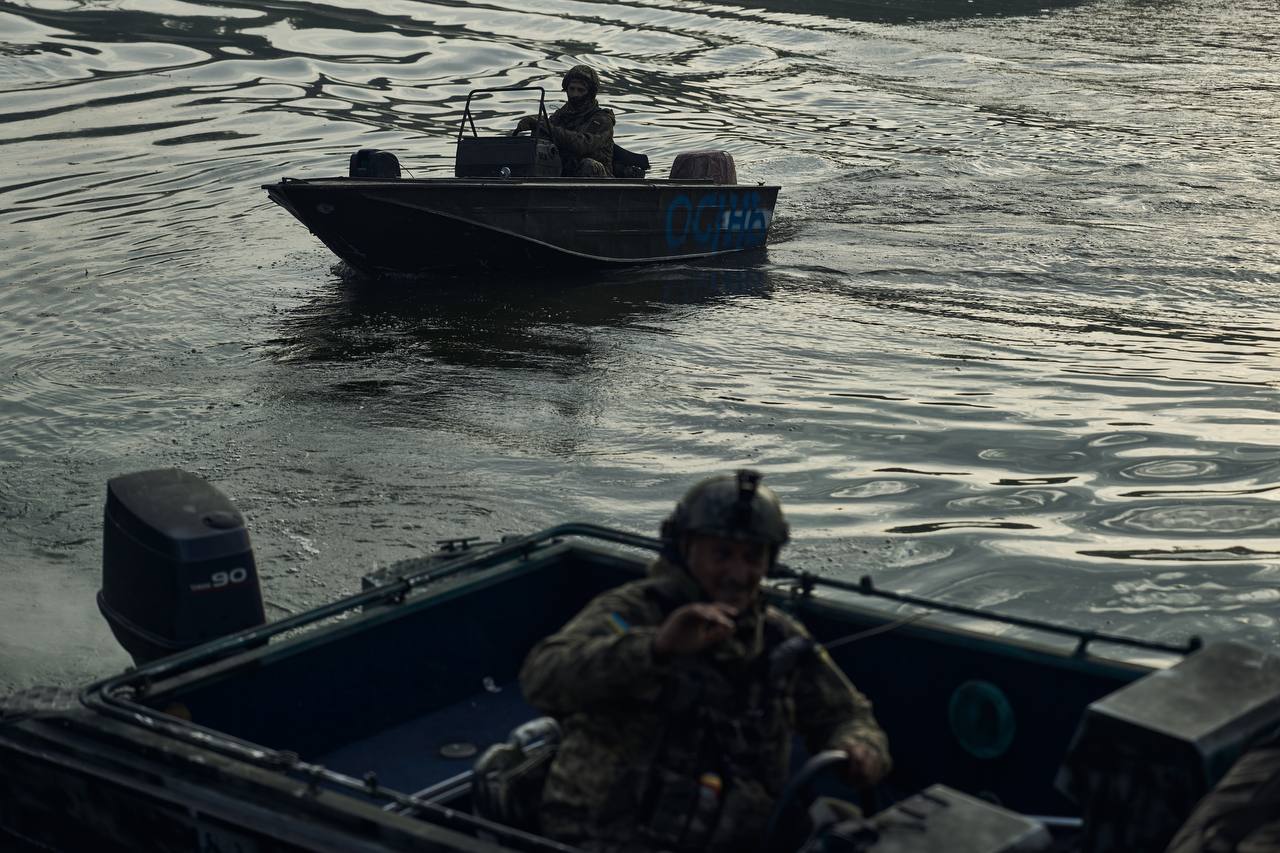Editor’s Note: This is an analysis by experts from the Center for Defense Strategies: Andriy Zagorodnyuk, Alina Frolova, Oleksiy Pavliuchyk, and Viktor Kevlyuk. It was originally published in Ukrainian by Ukrainska Pravda on Feb. 22. The Kyiv Independent is republishing it with permission.
This analysis focuses on the possible consequences of Russia’s President Vladimir Putin’s decision on Feb. 21 to recognize the Russian-occupied areas of Ukraine’s Donbas as independent states. The analysis was written at 11 a.m. on Feb. 22.
Tensions before Feb. 21
Russia has accumulated 150,000 service persons, thousands of equipment units, and a large naval group around Ukraine. The Kremlin has considered options for a large-scale offensive to seize much of Ukraine, including Kyiv, or to threaten an offensive with a high probability of gaining political concessions.
In addition, various tools of hybrid warfare were considered and partially used, in particular, special operations, cyber attacks, information, and psychological operations, sabotage and terrorist attacks (or threats to conduct them), etc.
At the same time, Russia set tough conditions for the United States and NATO to exclude Ukraine from potential membership and to move NATO's capabilities from eastern Europe.
The audacity of the demands and the possible unjustified invasion of Ukraine have partially united the Western world and provoked a harsh reaction, especially from the U.S., Britain, the EU leadership, Poland, and the Baltic states. Germany and France have stepped up their search for a diplomatic settlement and to regain their leadership on the continent.
In our opinion, the baseline Moscow scenario was intimidation by the threat of the use of force, which would enable Russia to obtain a large share of the stated demands through political compromises while avoiding a large-scale offensive.
But the intimidation did not work. Realizing the extremely negative consequences of meeting the Kremlin's demands on the world order and security, Western leaders have effectively denied Putin’s demands.
The continuous accumulation of forces and preparation for exercises in Belarus and the Black Sea had the potential to bring troops to a high level of combat readiness.
Many experts and officials believed that Russia would dare to launch a full-scale invasion. Others (including Center for Defense Strategies) insisted that Russia would use hybrid tools and individual local scenarios. The West has actively intensified the rhetoric, creating the prospect of “severe sanctions” and increased military aid many times over in an attempt to deter Russia from attacking.
At present, it seems that the Kremlin postponed a large-scale invasion scenario, at least for some time. The offensive didn’t happen on the expected dates. We believe that the rejection (at present) of the large-scale scenario was caused by factors we have already mentioned in our publications:
- Ukraine's readiness to resist and improved capabilities of the Armed Forces (including recent assistance) and the readiness of defense forces;
- “severe sanctions;”
- active political and diplomatic pressure;
- the disclosure of intelligence that exposed Russia's plans became an effective tool of deterrence.
For these reasons, the forces gathered at the borders of Ukraine are not enough to successfully capture and hold (Ukraine), and the implementation of such an operation is too risky.
New reality: From Feb. 21 on
Instead, Russia has chosen a different scenario, which is no less threatening.
In the last days before Feb. 21, several key events happened:
- Sharp, significant escalation of the situation on the front line in eastern Ukraine. The number of shellings has increased significantly, especially compared to January. There were no objective preconditions for this escalation (except for the will of the Russian Federation). It was created artificially.
- Delay of moving Russian troops out of the borders after the end of exercises in Belarus on Feb. 20, allegedly in reaction to the escalation (which was manufactured by the Russian Federation itself).
- Keeping a powerful strike group of the Russian naval capabilities after the end of the exercises on Feb. 19, and moving part of them to the Sea of Azov, preparation for large-scale amphibious operations.
- According to some data, the deployment of sabotage groups to some cities in Ukraine.
After that, an active phase of the false-flag operation was launched, which in fact simulated attacks by the Ukrainian Armed Forces on the positions of Russian hybrid forces located in the occupied territories in Donbas, which created a pretext for Russia’s proxy leaders to seek Russia’s protection.
This operation was carefully prepared but clumsily executed.
Most of its elements were so rudely fabricated that their pretense was apparent, including non-existent attacks on the Russian-led militant units, the recording of the proxy leaders' addresses in advance of the actual date of the operation, an attack on a non-existent "border checkpoint," and more.
There was a rapid "evacuation" of a small part of the population of the Russian-occupied territories, which was widely broadcast on TV, creating an image of a threat to the militant "republics" and an announced mobilization.
Such inept execution confirms that the details of the plan were developed quickly. Most likely, this plan was considered a backup until recently. Realizing that the operation would be immediately exposed, its authors did not pay much attention to details.
On Feb. 21, Russia’s National Security Council held a session. At the meeting, the heads of Russia’s law enforcement and security agencies appealed to Russian President Vladimir Putin to recognize the independence of the Russian-occupied territories in eastern Ukraine. Some spoke of accepting the territories as parts of Russia.
Most of the viewers noticed the poor preparation of the event – the participants often improvised and made mistakes, which also indicates a lack of time for preparation and differs from the usual style of the important events of the Russian leadership. There is a possibility that this event, which was broadcast "live," was actually pre-recorded.
Later on Feb. 21, Putin gave a televised address. Putin's long speech consisted of two almost unrelated parts. The main part is his interpretation of the history of Ukraine; the smaller part is about the decision to recognize the independence of the Russian-occupied territories in Ukraine.
The speech ended with the signing of decisions on recognition and decisions on "cooperation and friendship" between Russia and the militant “republics.” The same night, a decision was made to officially send regular Russian forces to the occupied parts of Donbas to "establish security." The goal was to deploy these forces along the "borders" of the militant “republics,” including on the line of contact.
Interpretation of events
1. Recognition of the Russian-occupied territories is a gross violation of the norms and principles of international law. It is a de facto annexation of part of the territory of Ukraine.
2. Recognition completely destroys all prospects of the Minsk and Normandy peace talks, which were based on recognizing the Russian-occupied territories as part of Ukraine.
3. The entry of the Russian Armed Forces into the territory of the occupied territories in Ukraine is a de facto act of armed aggression against Ukraine, which should lead to all the necessary actions of the Ukrainian government, the international community, and sanctions warned by world leaders.
4. The entry of Russian troops and their deployment on the front line pose significant military risks for Ukraine. Any escalation on the front line (including those provoked by Russia’s militants) will be regarded as Ukraine's aggression against Russia, which may provoke an open de facto or formal declaration of war on Ukraine by Russia.
5. By disrupting the Minsk and Normandy peace talks, Russia deprives itself of instruments to put pressure on Ukraine. Until recently, Russia actively used these tools at all platforms, demanding from Ukraine direct negotiations with its proxy leaders. Russia's insistence on the implementation of the Minsk Agreements (in Russia's interpretation) was Kremlin's only requirement for Ukraine.
Thus, Russia abandoned the strategy of integrating the occupied territories into the state system of Ukraine (on Russia's terms) and moved to a completely different strategy.
We believe that this strategy excludes any direct official relations between Russia and the leadership of Ukraine in the future but will be based on "legalizing" the militant “republics” as potential negotiators.
6. On the first part of Putin's speech on the "history of Ukraine."
• The speech was surprisingly long and consisted of dozens of statements with very manipulative content. Some historical and quasi-historical facts were taken out of context and glued together to "justify" the position. This has nothing to do with objective historical analysis.
• The speech had several theses: The creation of modern Ukraine was an artificial decision and a mistake of the Soviet authorities. The modern history of Ukraine has no signs of successful development, but corruption and the actual loss of sovereignty in favor of the "generalized" West (primarily the United States).
• The historical, ethnic, and cultural closeness of the people of Russia and Ukraine is a sufficient justification for ignoring Ukraine's sovereignty and the reason to be under Russian control. The fact that Ukraine declared independence and was recognized by Russia no longer matters.
• Putin's speech shows that he assesses Ukraine's progress in Euro-Atlantic integration and the transition to NATO standards as significant and recognizes that they are a prerequisite for the real prospect of joining NATO. This fact, in his opinion, is automatically a threat to Russia.
• The whole speech was permeated by the lack of any respect for the Ukrainian people, their independent choice. Government decisions, such as the decommunization policy and events like the Revolution of Dignity (EuroMaidan), have been described with despise and contempt.
• The speech openly demonstrated hatred towards Ukraine emotionally, confirming the hypothesis that Putin's wish to control Ukraine is an obsessive irrational idea.
• In the speech, he described the Ukrainian government as illegitimate, which came to power through a "coup." In this way, Putin declares that there is no one to deal with in Ukraine.
7. We see a clear evolution of Putin's public position on Ukraine:
• 2020 – Ukraine is a sovereign country, Russia is ready to cooperate with its government, but Ukraine must first reach an agreement with Russia.
• 2021 (July, Putin's article) – Ukraine has a dubious history of creation; Ukrainians and Russians are one and the same people; Russia respects the choice of the Ukrainian people, but Ukraine's sovereignty can only exist in partnership with Russia.
• 2022 (February) – Ukraine has no history; it is a historical error; it has no legitimate government; it is under external rule and does not deserve sovereignty.
The whole speech can be perceived as a "stream of consciousness," but this stream is not accidental. It is a de facto declaration of war on Ukraine at the political level and its denial of recognizing it as a sovereign country.
8. Russia's war against Ukraine on a hybrid level has been going on for a long time. The publicly active phase began in 2014, while the hidden phase began much earlier. The question of the possibility of an all-out war in the traditional military sense in this new reality remains.
Unfortunately, we foresee the possibility of adverse events in the following possible sequence:
- Creating provocations, committing a series of terrorist acts or false-flag operations, and accusing Ukraine of armed aggression against Russia and its citizens in the occupied territories.
- Promoting this position in the information spaces of Russia, the EU, and the world.
- Russia's official declaration of war on Ukraine.
- Conducting military measures against Ukraine.
We still believe that the Russian forces and capabilities accumulated at the border are not enough for a successful full-scale invasion and retention of most of Ukraine.
However, we consider a scenario of a significant escalation of the situation in the east of Ukraine with the possible use of the Russian armed forces, including aviation, missile weapons, and the navy, to be realistic.
Crossing the front line and attempting to seize parts of the land and settlements around the occupied territories for their forcible accession are possible.
Missile strikes are possible on military targets and infrastructure in various locations across Ukraine, including Kyiv. Their main goal will be to weaken the Armed Forces' capabilities and put psychological pressure.
Hybrid warfare, which will include information operations, cyber attacks, sabotage, and terrorist attacks, are tools that are constantly being used and will intensify.
9. There is, of course, an option of "strategic pause" without such an exacerbation. This can be done to accumulate sufficient capabilities and “recharge” the personnel after many weeks in the field.
10. What scenario will happen depends on the reaction of Western countries, in particular, diplomatic actions, sanctions, strengthening the military presence on NATO's eastern flank, increasing security assistance to Ukraine.
11. Unfortunately, both scenarios are very detrimental to the Ukrainian economy. In addition, Russia will in any case look for a window of opportunity to use military force and seize Ukrainian territory.
What should Ukraine do?
Our recommendations to the Ukrainian government:
1. Ukraine must call on the international community to impose tough sanctions against Russia for violations of international law, acts of aggression, and to deter further aggressive actions against Ukraine and other former Soviet states - Moldova, Georgia, and the Baltic states.
2. A number of experts believe that Ukraine should impose martial law in Donetsk and Luhansk oblasts.
3. Other actions needed:
- mobilization of the first military reserve group;
- deployment of territorial defense forces;
- intensification of measures envisaged by the Defense Plan of Ukraine.
4. The President of Ukraine must appeal to NATO countries, especially the United States, to obtain immediate military assistance in the face of Russia's aggression against Ukraine at a conceptually higher level of threats to national sovereignty and territorial integrity.
5. Ukraine must use diplomacy within the UN Security Council and the OSCE framework to mobilize effective support for Ukraine and impose tough measures against Russia. A number of our experts believe that the use of the peacekeeping corps by the UN Security Council is the right decision.
Unfortunately, Russia is currently chairing the UN Security Council, and it has the right to veto, which will complicate the process. However, we believe that other members of the UN Security Council could force Russia to agree with the deployment of peacekeepers on the front line, as Russia is a party to the conflict.
6. Ukraine must develop a clear legal position on the definition and interpretation of Russian aggression and immediately begin appropriate legal processes on international platforms.
Recommendations to the citizens of Ukraine:
1. Do not lose your composure, calmly assess the situation.
2. Support defense and security forces.
3. If possible, join the ranks of territorial defense or provide them with assistance. You can find detailed instructions on how to do it in Kyiv here.
4. Actively participate in civil defense activities.
5. Have a well-thought-out behavior algorithm in different scenarios, particularly in case of disruption of critical infrastructure, lack of communication, the internet.
6. Understand that Putin is not ready to seize and hold all of Ukraine by land. In the foreseeable future, the imparity in military capacity will be reduced due to the development of Ukraine's defense forces.
General background
1. The current Russian leadership has consistently pursued a strategic goal: the transformation of Ukraine into a dependent object, deprived of full sovereignty and its own politics. This goal of the Kremlin is hindered by the development of a strong civil society with European values and the implementation of Ukraine's European and Euro-Atlantic aspirations.
Russia has used various strategies to prevent this, but they have not yielded the desired result. Ex-President Viktor Yanukovych opened a window of opportunity for dismantling Ukraine's statehood, but the Revolution of Dignity thwarted these intentions.
However, by that time, Russia had already prepared a plan for the fragmentation of Ukraine. Taking advantage of the power vacuum in Ukraine, Russia occupied Crimea and tried to stage a separatist movement in eastern Ukraine. This plan partially worked, forming a new reality: the temporarily occupied Crimea, the partially occupied sea, the occupied territories in eastern Ukraine, and the undeclared war going on for eight years. The war only united Ukrainian society against Russia and strengthened European and Euro-Atlantic sentiment.
2. Under President Volodymyr Zelensky, the Kremlin sought to deprive Ukraine of its sovereignty and make Euro-Atlantic aspirations impossible by manipulating interpretations of the Minsk agreements, periodically escalating the situation in the occupied territories, and trying to destabilize the domestic political and economic situation.
However, these actions did not achieve their goal. Ukraine has taken many steps forward: it has approved the Euro-Atlantic course, made significant progress in NATO integration, continued to build defense capabilities, demonstrated economic growth, and took several steps to reduce Russia's influence on Ukraine's domestic policy (shutting down Viktor Medvedchuk-affiliated TV channels), blocked the implementation of Nord Stream 2 and began the process of de-occupation of Crimea (Crimean Platform). Of course, the Russian Federation saw all this as a threat to the completion of its strategic goals.
3. Several external factors in early 2021, according to the Russian leadership, opened a "window of opportunity." These factors included the difficult U.S. withdrawal from Afghanistan, the U.S.'s prioritization of relations with China, the change of government in Germany, the presidential race in France, and the expected success of Washington's unblocking of Nord Stream 2.
The "testing-mode" accumulation of Russian military forces on the border with Ukraine did not bring a negative consequence for Russia. So, the Kremlin decided to take advantage of the opportunities and created the current crisis. The scale of the crisis and the possibility of open aggression indicate that this time Russia has decided to finally achieve its goal.
Ukraine is on the verge of a crucial moment in its history.




